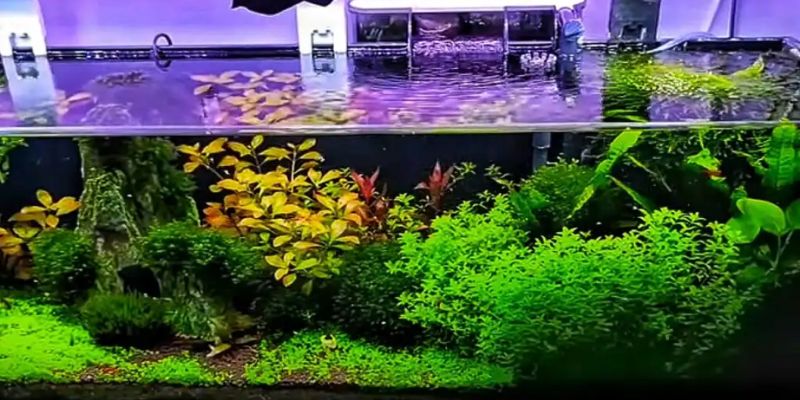When referring to aquatic plants and animals, the terms “emersed” and “immersed” are widely used to describe a wide range of conditions. This distinction is crucial knowledge for anyone working with aquariums or studying biology or ecology. This piece contrasts the two terms “emersed” and “immersed” and explores the pros and cons of each. Our goal in delving deeper into “Emersed Vs Immersed Difference & Comparison” is to help you grasp their full import and ramifications.
Emersed
To be “emersed” is to have the tops or bottoms of one’s body exposed to the air, as in the case of a plant or animal. Plants that are “emersed” have their roots in water but their stems and leaves are above ground. This enables them to take in carbon dioxide from the air and utilise it in photosynthesis alongside the sun’s rays. The water lily, the cattail, and the bulrush are all examples of plants that live their entire lives underwater.
Emersed plants in wetland habitats provide essential food and refuge for a wide variety of creatures, including birds, insects, and amphibians. The ability to thrive in both marine and terrestrial settings demonstrates their adaptability and resilience.
Immersed
A plant or animal is said to be “immersed” if it is completely submerged in water. The roots, leaves, and stems of immersed plants are the only parts that emerge from the water throughout development. These plants have figured out ways to survive in water by using dissolved oxygen to fuel photosynthesis and breathing. Eelgrass, pondweed, and watermilfoil are only some examples of the aquatic vegetation.
Aquatic ecosystems gain in many ways when plants can be cultivated in the water. They keep the land around waterways and lakes from washing away, add oxygen to the water, and support aquatic life. They improve water quality by trapping sediments and unused nutrients, therefore they help preserve the ecosystem.
Emersed Vs Immersed Difference & Comparison
Now that we know what sets emersed and immersed states apart, we may draw meaningful comparisons between them.
- Habitat: Marshes, wetlands, and the shorelines of lakes and ponds are typical habitats for submerged plant life. There are plants that can survive and thrive in water at sea level or below.
- Growth Patterns: Leaves and stems of submerged plants protrude above the water, allowing them to survive in both aquatic and terrestrial environments. As a result of their adaption to life under water, submerged plants develop their leaves and stems fully underwater.
- Gas Exchange: Carbon dioxide is taken up by submerged plants and oxygen is released. But plants grown in water get their oxygen from the water and give off carbon dioxide.
- Ecological Purpose: Submerged vegetation serves a dual ecological purpose by sheltering and feeding a wide range of species including birds, insects, and amphibians. In order to maintain a balanced aquatic ecology, plants that can survive underwater are essential.
- Aquaria Application: Submerged vegetation is a common component in aquariums that aim to replicate wetland ecosystems. On the other hand, both marine and freshwater aquariums encourage the development of aquatic vegetation.
Conclusion
To fully grasp the intricacies of aquatic ecosystems, it is essential to know the difference between emersion and immersion. Emersed plants, in contrast to those that have adapted to life in deeper water, do particularly well in the intertidal zone between the two. These species range widely in terms of appearance, ecological role, and usefulness. By taking into account these differences, we may learn more about the natural world and make more informed choices when it comes to conservation efforts, aquarium layouts, and scientific inquiries.


Посетите текущий сайт https://www.crnflorida.com/2022/08/05/4441/